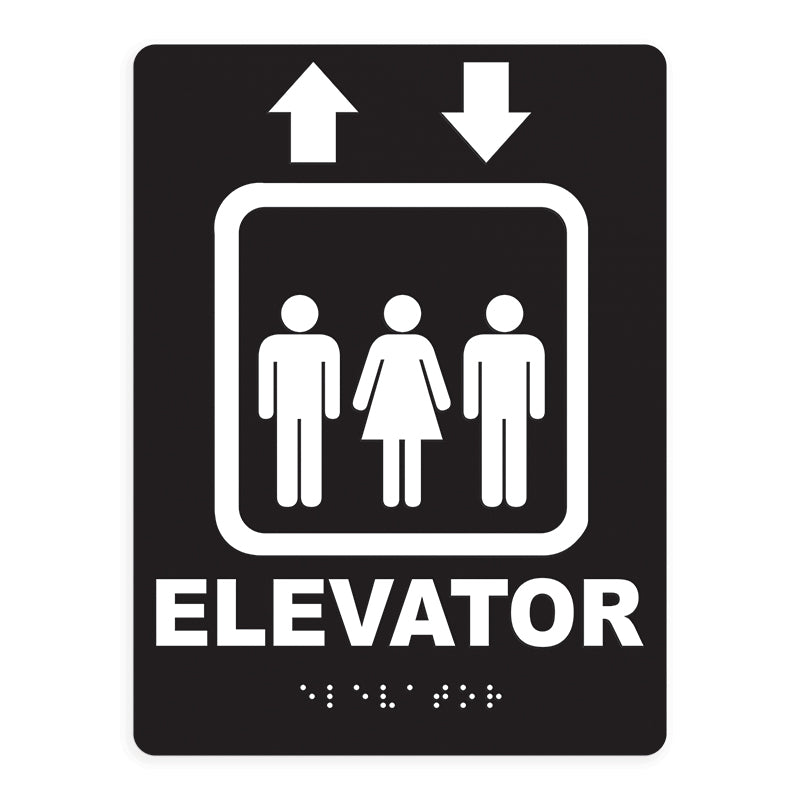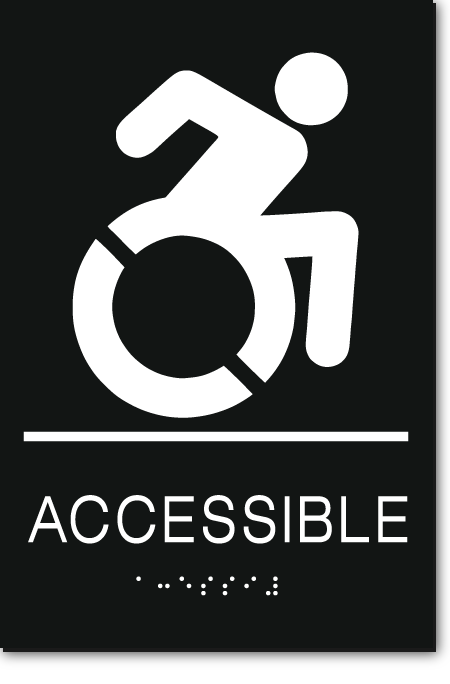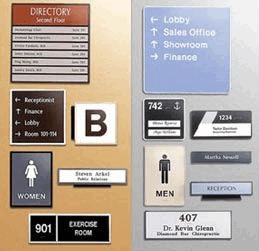Checking Out the Trick Features of ADA Indicators for Enhanced Accessibility
In the world of availability, ADA indications serve as quiet yet powerful allies, guaranteeing that rooms are comprehensive and accessible for individuals with specials needs. By integrating Braille and responsive components, these indications damage obstacles for the aesthetically impaired, while high-contrast color systems and legible font styles cater to varied visual needs.
Importance of ADA Compliance
Ensuring conformity with the Americans with Disabilities Act (ADA) is critical for promoting inclusivity and equal access in public areas and work environments. The ADA, passed in 1990, mandates that all public facilities, employers, and transport services accommodate people with handicaps, ensuring they appreciate the very same civil liberties and possibilities as others. Conformity with ADA standards not only fulfills legal responsibilities but additionally enhances an organization's online reputation by showing its dedication to diversity and inclusivity.
One of the key elements of ADA compliance is the application of obtainable signage. ADA indications are made to guarantee that individuals with specials needs can conveniently navigate via buildings and areas. These indications need to adhere to details standards relating to dimension, font style, color contrast, and placement to guarantee visibility and readability for all. Effectively executed ADA signs aids get rid of obstacles that people with disabilities frequently encounter, consequently promoting their independence and self-confidence (ADA Signs).
Moreover, adhering to ADA regulations can reduce the danger of legal effects and prospective penalties. Organizations that stop working to abide by ADA guidelines might deal with penalties or lawsuits, which can be both economically burdensome and damaging to their public photo. Thus, ADA conformity is indispensable to fostering a fair atmosphere for everybody.
Braille and Tactile Aspects
The incorporation of Braille and tactile elements into ADA signage embodies the principles of accessibility and inclusivity. These functions are essential for individuals who are aesthetically damaged or blind, enabling them to navigate public areas with greater freedom and confidence. Braille, a responsive writing system, is important in giving created details in a style that can be conveniently viewed with touch. It is typically placed below the matching text on signs to make sure that individuals can access the information without aesthetic aid.
Responsive components extend beyond Braille and consist of elevated personalities and symbols. These components are designed to be discernible by touch, enabling individuals to recognize area numbers, restrooms, leaves, and other important areas. The ADA establishes specific guidelines relating to the size, spacing, and positioning of these responsive components to enhance readability and ensure uniformity across different settings.

High-Contrast Shade Systems
High-contrast color plans play a critical role in boosting the exposure and readability of ADA signs for people with visual disabilities. These schemes are important as they maximize the difference in light reflectance between message and history, guaranteeing that indicators are conveniently discernible, even from a range. The Americans with Disabilities Act (ADA) mandates the usage of details shade contrasts to suit those with Website restricted vision, making it an essential element of compliance.
The efficiency of high-contrast shades hinges on their capability to stand out in different lighting conditions, consisting of poorly lit settings and areas with glow. Usually, dark message on a light history or light text on a dark background is employed to accomplish ideal contrast. As an example, black message on a yellow or white history offers a plain visual distinction that aids in fast recognition and understanding.

Legible Fonts and Text Dimension
When thinking about the design of ADA signage, the choice of legible typefaces and proper message size can not be overemphasized. These components are essential for making certain that signs are available to people with aesthetic impairments. The Americans with Disabilities Act (ADA) mandates that font styles should be sans-serif and not italic, oblique, manuscript, very ornamental, or of unusual form. These needs assist make sure that the message is conveniently readable from a distance which the characters are appreciable to varied target markets.
According to ADA standards, the minimal text height need to be 5/8 inch, and it needs to raise proportionally with viewing distance. Consistency in text dimension contributes to a natural visual experience, assisting individuals in browsing settings successfully.
Additionally, spacing in between lines and letters is essential to clarity. Sufficient spacing prevents characters from showing up crowded, improving readability. By adhering to these standards, developers can significantly improve accessibility, making sure that signage serves its desired objective for all individuals, regardless of their aesthetic abilities.
Reliable Positioning Methods
Strategic placement of ADA signs is necessary for making the most of access and making sure compliance with legal requirements. Appropriately located indications guide individuals with impairments properly, facilitating navigating in public rooms. Secret factors to consider include visibility, height, and distance. ADA see this site guidelines state that signs need to be mounted at an elevation in between 48 to 60 inches from the ground to ensure they are within the line of sight for both standing and seated individuals. This conventional height array is crucial for inclusivity, enabling wheelchair customers and individuals of varying heights to access info effortlessly.
Additionally, indicators must be placed surrounding to the lock side of doors to allow very easy recognition prior to entry. Uniformity in indicator placement throughout a center improves predictability, decreasing complication and improving total user experience.

Conclusion
ADA signs play a vital duty in advertising accessibility by incorporating functions that deal with the demands of individuals with disabilities. Including Braille and tactile aspects guarantees crucial info is easily accessible to the visually damaged, while high-contrast color pattern and clear sans-serif fonts improve presence throughout various lights conditions. Effective placement techniques, such as ideal mounting elevations and calculated locations, better promote navigation. These aspects jointly foster a comprehensive environment, emphasizing the value of ADA conformity in making sure equivalent accessibility for all.
In the world of accessibility, ADA indicators offer as silent yet effective allies, making certain that spaces are inclusive and navigable for individuals with handicaps. The ADA, established in 1990, mandates that all public centers, employers, and transport solutions accommodate individuals with specials needs, ensuring they delight in the same civil liberties and chances as others. ADA Signs. ADA signs are designed to guarantee that people with disabilities can quickly navigate via structures and areas. ADA standards stipulate that indicators must be installed at a height between 48 to 60 inches from the ground to guarantee they are within the line of sight for both standing and seated people.ADA signs play a crucial function in promoting access by incorporating attributes that attend to the requirements of individuals with impairments